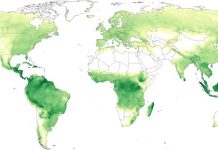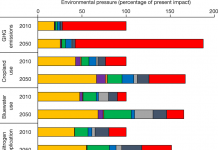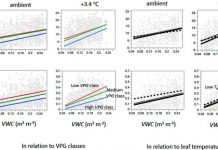【环境可持续发展中的植物生物学】Joseph M. Jez* Soon Goo Lee Ashley M. Sherp. The next green movement: Plant biology for the environment and sustainability. Science 2016 Vol. 353 Issue 6305 pp. 1241-1244
Abstract
From domestication and breeding to the genetic engineering of crops plants provide food fuel fibers and feedstocks for our civilization. New research and discoveries aim to reduce the inputs needed to grow crops and to develop plants for environmental and sustainability applications. Faced with population growth and changing climate the next wave of innovation in plant biology integrates technologies and approaches that spanfrom molecular to ecosystem scales. Recent efforts to engineer plants for better nitrogen and phosphorus use enhanced carbon fixation and environmental remediation and to understand plant-microbiome interactions showcase exciting future directions for translational plant biology. These advances promise new strategies for the reduction of inputs to limit environmental impacts and improve agricultural sustainability.
【海洋中的碳氮循环】Aron Stubbins. A carbon for every nitrogen. PNAS doi:10.1073-pnas.1612995113
Biology and the environment interact one shaping the other (1). In the oceans the chemistry of seawater and the chemistry of life are intimately linked (2). In 1958 Alfred Redfield (3) noted that the microscopic plankton of the surface ocean contain carbon nitrogen and phosphorous atoms in a stoichiometry of ∼105:16:1 and that as these organisms sink and decay the deep waters of the ocean become enriched in carbon nitrogen and phosphorous at the same ratio. This marked the beginnings of ecological stoichiometry a growing field that is providing novel insight into the ecology and elemental cycles of the planet (4). A study in PNAS provides a new stoichiometric link reporting that for every nitrogen consumed in the surface Atlantic Ocean 1.12 carbons are converted from CO2 to dissolved organic carbon (DOC) (5).
Carbon sits at the center of the elemental cycles. It is the backbone of the organic molecules that are the principal currency and building blocks of life. Carbon dioxide is the main anthropogenic greenhouse gas responsible for climate change (6). As phytoplankton grow in sunlit surface waters they incorporate inorganic carbonate from seawater into organic molecules. Much of the organic carbon produced during photosynthesis is rapidly returned to the inorganic pool via respiration with a small fraction accumulating as net community production (NCP). The carbonates incorporated by phytoplankton are the dissolved equivalent of atmospheric CO2 and as carbonates are depleted in seawater they are replenished by inputs of CO2 from the atmosphere. When the organic carbon produced by NCP is transported into the depths of the ocean it provides a sink







